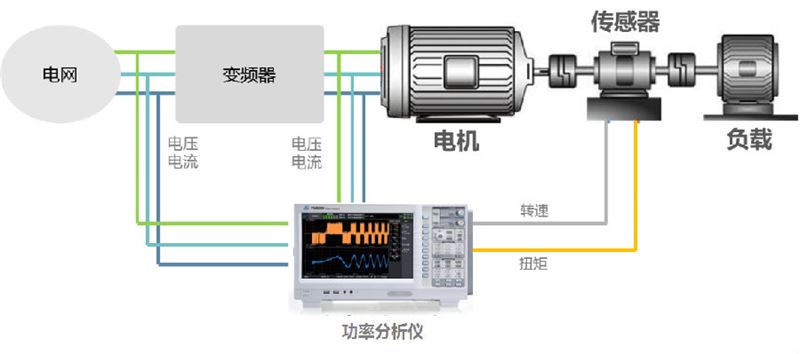How to choose a suitable frequency converter for the motor
Abstract: The frequency converter has enabled the motor transmission system to achieve two wishes: firstly, it has enabled the motor to operate more efficiently; The second is to enable the motor to achieve controllable operating conditions, avoiding the problem of big cows pulling small cars. But the problem facing engineers is: with so many types of motor loads, the performance requirements for the equipped frequency converter also vary greatly. How to choose a suitable frequency converter for the motor?
The English translation of the frequency converter is VFD (Variable Frequency Drive), which may be one of the few examples of modern technology's reverse translation from Chinese to English. Frequency converters are applied in frequency conversion technology and microelectronics technology to control the power transmission components of AC motors by changing the frequency and amplitude of the motor's working power supply.

Choosing the appropriate frequency converter for the entire motor motion system has become a headache for engineers.
Overall, the selection of frequency converters should be considered based on the type of controlled object, speed range, static speed accuracy, starting torque, etc., to ensure that they meet process and production requirements while being both user-friendly and economical.

The general experience is:
Choose the largest frequency converter for the largest motor, and sometimes it can be a larger size.
It is best to install an AC reactor at the input end of a high-power frequency converter with a lower power factor. This involves improving the power factor and suppressing high-frequency harmonics. If frequently starting and braking, install the braking unit and braking resistor.
If you need to reduce noise, you can choose a water-cooled frequency converter;
If braking is required, a dynamic chopper and braking resistor should be selected and equipped. Alternatively, a four quadrant product can be selected to provide energy feedback to the power grid and save electricity;
If there is only DC power supply on site, a simple inverter product (using DC power supply) can be chosen to drive the motor.
The final basis for selecting a frequency converter is the current curve of the frequency converter, which includes the current curve of the mechanical load.

Here are some practical issues that we need to pay attention to when choosing a frequency converter.
1. The purpose of using frequency conversion; Constant voltage control or constant current control, etc.
2. The load type of the frequency converter; For example, for vane pumps or volumetric pumps, pay special attention to the performance curve of the load, which determines the method of application.
3. The matching problem between the frequency converter and the load;
Voltage matching; The rated voltage of the frequency converter matches the rated voltage of the load.
Current matching; For ordinary centrifugal pumps, the rated current of the frequency converter matches the rated current of the motor. For special loads such as deep water pumps, it is necessary to refer to the motor performance parameters to determine the frequency converter current and overload capacity with high current.

Torque matching; This situation may occur under constant torque loads or with a reduction device.
When using a frequency converter to drive a high-speed motor, due to the small reactance of the high-speed motor, the increase in higher harmonics leads to an increase in the output current value. Therefore, the selection of frequency converters for high-speed motors requires a slightly larger capacity than the selection of ordinary motors.
5. If the frequency converter needs to operate with a long cable, measures should be taken to suppress the impact of the long cable on the ground coupling capacitance to avoid insufficient output of the frequency converter. Therefore, in this case, the capacity of the frequency converter should be increased by one gear or an output reactor should be installed at the output end of the frequency converter.
For some special applications, such as high temperatures and altitudes, it may cause a reduction in the capacity of the frequency converter, and the capacity of the frequency converter should be increased by one gear.
For some occasions with strict requirements for motor motion control systems, it is necessary to accurately test the selection effect of frequency converters. The direct method is to test through the motor testing system. But in order to complete the overall testing of the frequency converter and motor system, higher requirements are also put forward for the motor testing system, such as high bandwidth, high-precision electrical parameter measurement, multi-channel synchronous testing, etc.

